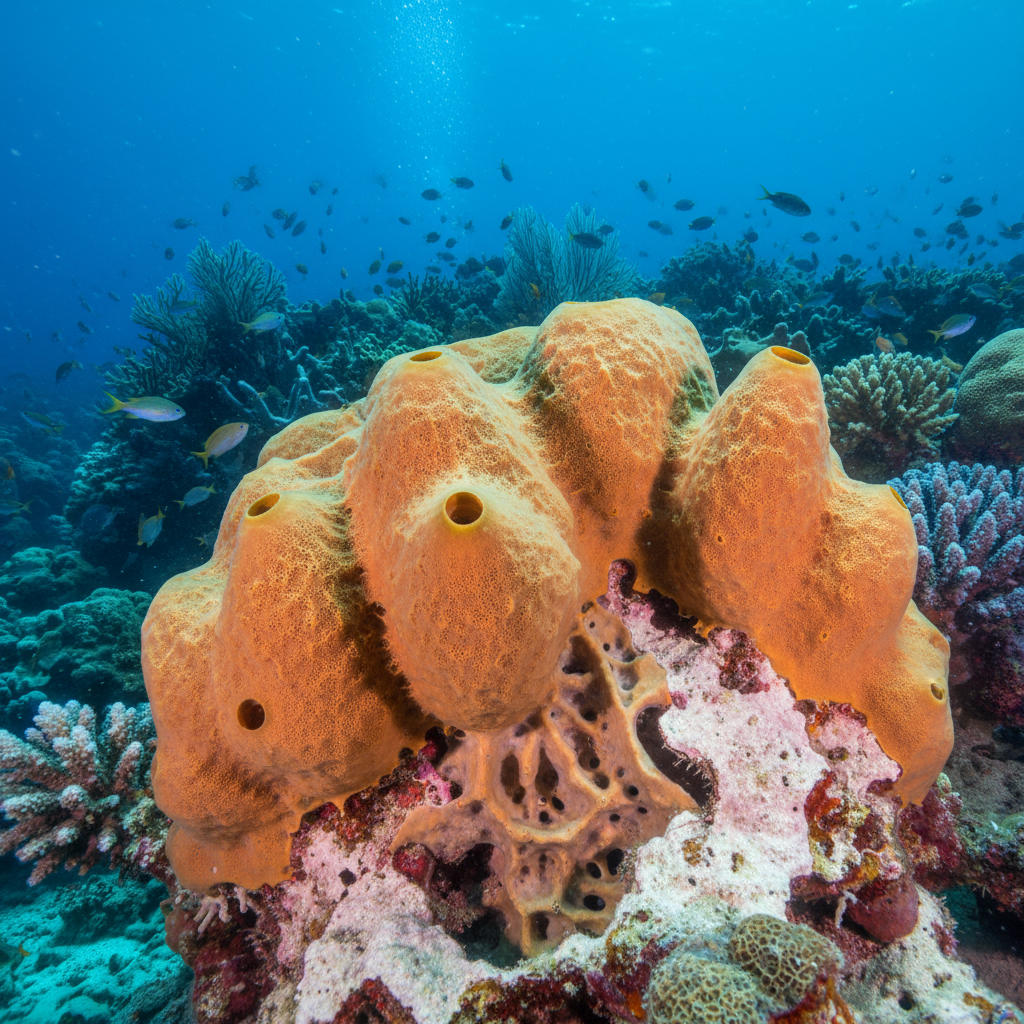Classification of Cliona
- Phylum: Porifera (Pore-bearing animals with cellular level organization and generally asymmetrical forms)
- Class: Demospongiae (Sponges with skeletons of spongin fibers, siliceous spicules, or both)
- Order: Clionaida (Sponges specialized in boring calcareous materials)
- Family: Clionaidae (Sponges exhibiting aggressive excavation of limestone, mollusc shells, and coral reefs)
- Genus: Cliona
Cliona, commonly known as boring sponges, represent an important genus of marine sponges that play a significant ecological role by excavating calcareous substrates.

Habit and Habitat
Cliona spp. are primarily found in shallow marine environments such as reefs and lagoons. They lead a boring lifestyle by excavating calcareous rocks, shells of bivalves, and limestones, often living inside these substrates. These sponges are commonly attached at the base of their holes or sometimes encrust over the surface.
Geographical Distribution
They have a worldwide distribution, inhabiting coastal waters across all temperate and tropical oceans except Antarctica. They are abundant along the coasts of the British Isles, the Mediterranean, the Atlantic, and Pacific Oceans. Depth range typically extends up to 200 meters, with some species adapted to intertidal zones.
General Characteristics
- Commonly called as boring sponge
- It is a light yellow coloured sponge. Sponge forms a mass up to approximately 20 cm in diameter.
- Proximal end or base is attached to substratum. Clam shell, specially Venus, is completely riddled by it.
- It enters the interior of above animals and lives permanently there, forming extensive burrows and tunnels. Each tunnel has a raised opening, called osculum.
- The surface shows various elevations each containing an osculum and large number of coral cups. Reproduction sexual and early stages-free-living.
- The larva grows into a compact mass, 17 to 70 cm in diameter made up of spongin fibres and monaxial siliceous spicules.
- Various oscula are seen over the surface.
- They forms extensive colonies visible as yellow, orange, or green masses due to symbiotic dinoflagellates (zooxanthellae) in some species.
- The surface is smooth, tough, and mosaic-like with tiny inhalant pores and larger oscula.
- Sponges have a skeleton composed of siliceous spicules and spongin fibers. Megascleres are commonly tylostyles; microscleres, if present, are raphides.
- The canal system is leuconoid, allowing efficient water filtration and nutrient absorption.
- Boring activity involves chemical dissolution and mechanical abrasion by acid secretion and spicules.

Special Features
The sponge beings its existence by boring in the dead or living shells of various molluscs. It honeycombs the shell and after destroying it grows over it. Cliona celata has sulphurous odour.
A distinctive feature of them is its dual lifestyle: the boring phase where it excavates calcareous substrates and the massive phase where it forms large lobose structures with raised ridges. This genus can cause significant damage to mollusc beds and coral reefs, impacting pearl industries and natural ecosystems. Some species can shrink in size and lose visible oscula when removed from water.
Identification
Cliona is identified by its bright coloration often yellow to orange, tough texture, and ability to bore holes in calcareous substrates. Two common forms exist:
- Boring form: Yellow lobes protruding from limestone or shells, often visible as the rounded tips of papillae.
- Massive form: Thick plate-like or lobose body structures with raised ridges, large oscula with raised rims, and tuberculate inhalant papillae.
Microscopic examination reveals densely arranged tylostyle spicules and well-developed leuconoid canal systems. Presence or absence of microscleres aids species-level identification.
References:
- https://en.wikipedia.org/wiki/_celata
- https://byjus.com/neet/cliona/
- https://www.aakash.ac.in/important-concepts/biology/cliona
- https://www.marlin.ac.uk/species/detail/2188
- https://en.wikipedia.org/wiki/Cliona_californiana
- https://www.vedantu.com/neet/cliona
- https://www.habitas.org.uk/marinelife/species.asp?item=C3020
- https://testbook.com/biology/cliona
- https://www.sealifebase.se/summary/Cliona-celata.html
- http://www.marinespecies.org/aphia.php?p=taxdetails&id=134121
